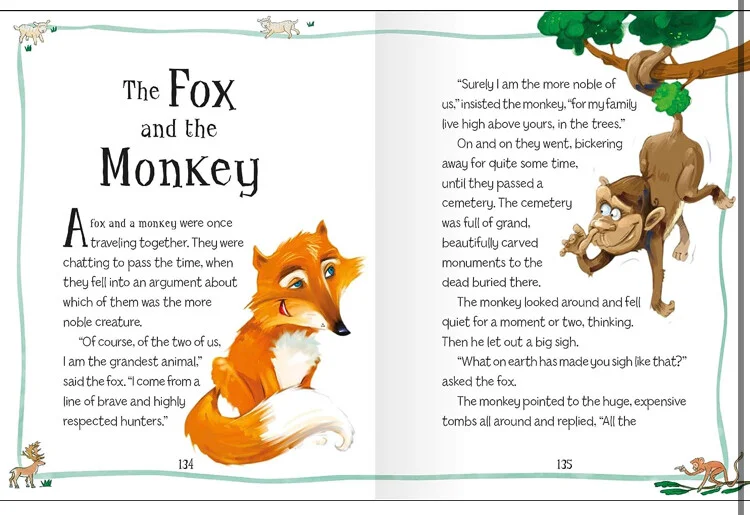scrapfellow.com – Fables, with their succinct plots and clear moral lessons, are one of the oldest and most enduring forms of storytelling. Rooted in oral traditions and often attributed to ancient cultures, fables serve both as entertainment and as vehicles for teaching ethical values. They often feature anthropomorphized animals or mythical creatures, and while their structure may seem simple, the storytelling techniques behind them are anything but. To craft a memorable fable, the right storytelling techniques are key. In this article, we’ll explore some essential techniques to help you create your own fable or moral tale.
1. Choose a Simple Yet Engaging Premise
Fables typically revolve around a straightforward plot that is easy to understand, even for young audiences. The storyline is usually uncomplicated, focusing on a single issue or moral dilemma. For example, a story about a greedy fox who learns that it is better to be content with what one has is clear in its premise and message.
- Tech Tip: Focus on one central theme or moral lesson, such as honesty, kindness, patience, or humility. Avoid introducing too many subplots or complications that might distract from the main point.
2. Anthropomorphize the Characters
One of the defining characteristics of fables is the use of anthropomorphism—giving human traits to animals, objects, or natural forces. This technique allows readers to relate to these characters while also making the lessons more universal. These animal characters often symbolize human behaviors or attitudes, such as the cunning fox, the slow but steady tortoise, or the wise owl.
- Tech Tip: Select animals or creatures whose behavior or natural characteristics can metaphorically represent human traits. A rabbit can represent impulsiveness, a lion can symbolize leadership, and a crow might stand for cleverness or arrogance.
3. Create a Clear Conflict or Dilemma
The heart of any fable is the conflict—a situation in which a character faces a choice or challenge that will ultimately lead to the story’s lesson. The conflict is often rooted in human nature or societal problems, but it is played out through animal characters. In Aesop’s fables, for instance, the “Tortoise and the Hare” presents the idea that slow and steady effort can win the race, teaching perseverance over arrogance.
- Tech Tip: Craft a situation in which the character’s weaknesses, flaws, or bad behavior lead to negative consequences. For example, a character’s greed or laziness might cause their downfall, while virtues such as honesty or teamwork can lead to success.
4. Use a Concise and Direct Narrative Structure
Fables tend to be short, making brevity a crucial storytelling technique. The structure should be direct, with a clear beginning, middle, and end. The opening introduces the characters and sets up the conflict, the middle shows the characters’ actions and choices, and the ending delivers a clear moral lesson. The language should be simple, easy to understand, and to the point.
- Tech Tip: Avoid unnecessary elaboration or details. Keep the plot linear, and focus on the actions that directly contribute to the resolution of the conflict and the conveyance of the moral.
5. End with a Moral Lesson
Perhaps the most essential element of any fable is the moral or lesson that is conveyed at the end. The moral is usually explicit, often stated directly at the conclusion of the story. This is where the reader or listener is reminded of the lesson to be learned from the characters’ actions. The moral serves as the “point” of the story, making it more than just an entertaining tale.
- Tech Tip: Be clear and concise with the moral. The lesson should be simple enough for readers to easily grasp and apply to their own lives. For example, in “The Boy Who Cried Wolf”, the moral is “Don’t lie, or no one will believe you when you tell the truth.”
6. Utilize Symbolism and Allegory
Fables often use symbolism and allegory to deepen the meaning of the story. For instance, a clever fox could symbolize deception, while a noble lion might represent bravery and leadership. Through this technique, the animals’ actions and the consequences of those actions mirror human society and individual behavior.
- Tech Tip: Use symbols that are universally understood or easily recognizable. For example, the tortoise’s slowness could symbolize patience, and the hare’s speed could represent overconfidence or impatience.
7. Incorporate Repetition for Emphasis
In many fables, repetition is used to reinforce the message and ensure that the lesson is clear. Repetition could be in the form of phrases, actions, or certain moral elements being restated throughout the story. For example, a character might repeatedly make the same mistake, which ultimately leads to their downfall, thereby emphasizing the moral of the story.
- Tech Tip: Use repetition strategically to reinforce key points. For example, the phrase “Slow and steady wins the race” might appear several times during the story to emphasize the moral.
8. Keep the Tone Light and Accessible
While the moral of a fable often addresses serious themes, the tone of the story is typically light-hearted and accessible. The simplicity of the plot, along with the playful nature of animal characters, keeps the story engaging and enjoyable without becoming overly didactic or heavy-handed.
- Tech Tip: Maintain a tone that is approachable for your target audience. Whether writing for children or adults, the goal is to entertain while simultaneously conveying a lesson.
9. Use Dialogue to Reveal Character Traits
In a fable, dialogue plays a crucial role in revealing the personality of the characters and advancing the plot. Through conversations, characters can express their motives, make choices, and sometimes even confront their flaws. Dialogue also helps make the characters more relatable and vivid in the reader’s mind.
- Tech Tip: Use dialogue that reflects the characters’ nature. A boastful lion might speak in grandiose terms, while a humble rabbit might be more modest in their speech. Dialogue should feel authentic to the character and push the story forward.
10. Play with Irony
Irony is an effective storytelling tool in fables, often used to highlight the contrast between what the characters expect to happen and the actual outcome. This ironic twist adds a layer of surprise and reinforces the moral lesson. For instance, in “The Fox and the Grapes”, the fox ironically convinces himself that the grapes he cannot reach are sour, demonstrating the concept of rationalizing failure.
- Tech Tip: Introduce a situation where the character’s expectations are subverted, leading to a revelation about their own behavior or beliefs. This can add depth and make the moral more impactful.
Conclusion: Crafting a Lasting Fable
Writing a fable is an art form that blends simplicity with meaning. By focusing on a clear and relatable moral, creating anthropomorphized characters, and using concise storytelling techniques, you can craft a fable that resonates with your audience and imparts valuable life lessons. Whether you’re writing for children or adults, the core principles of fable storytelling remain the same: clear moral lessons, engaging characters, and a compelling narrative structure. Use these techniques to create stories that are as timeless and impactful as the fables of the past.





